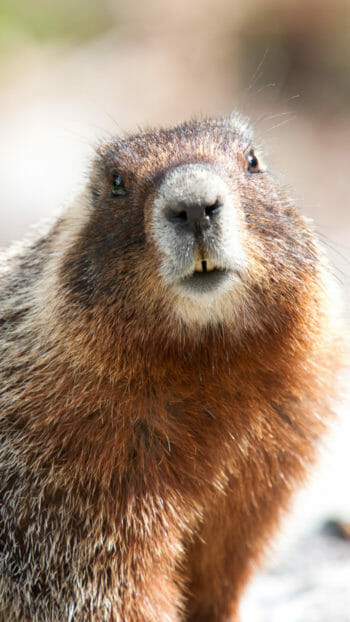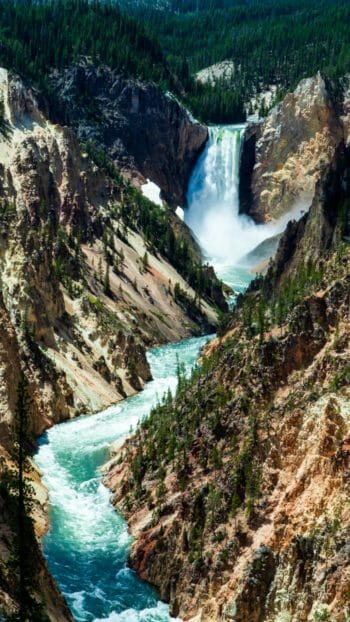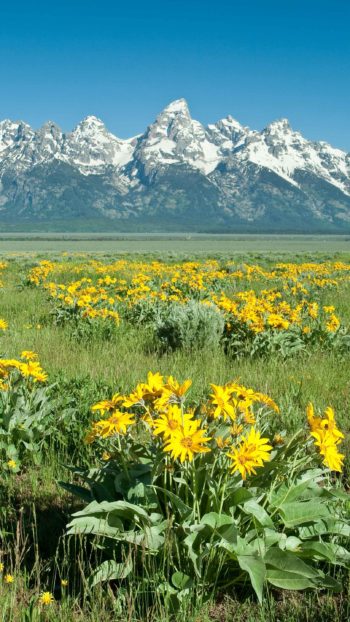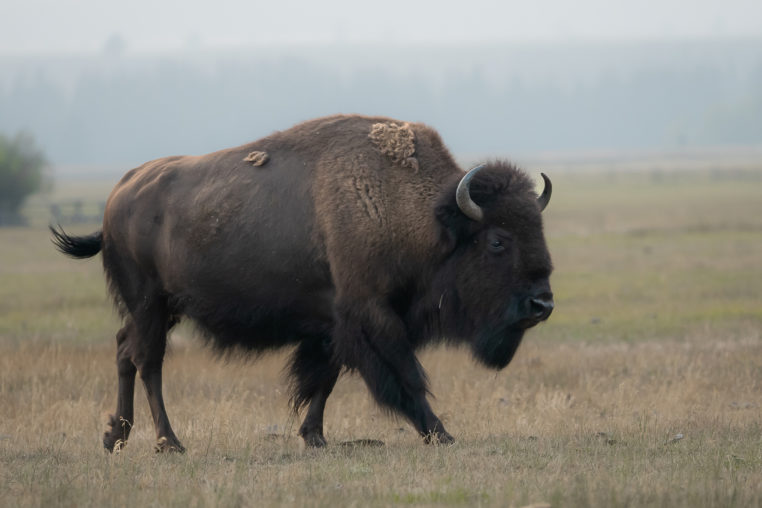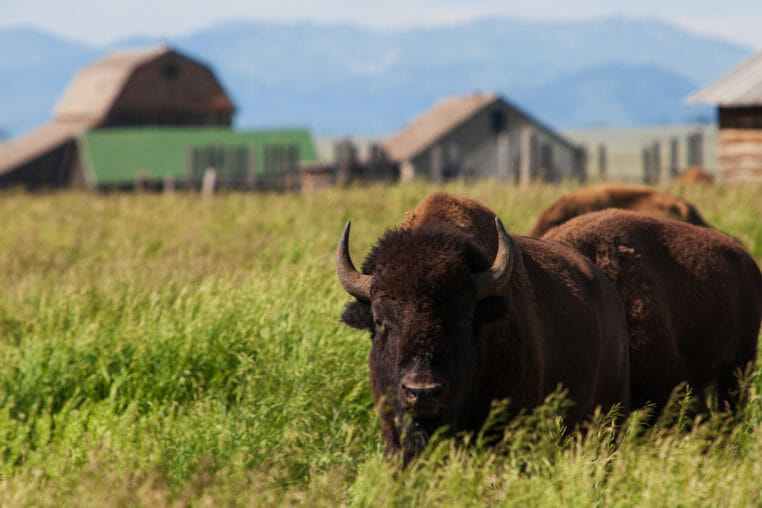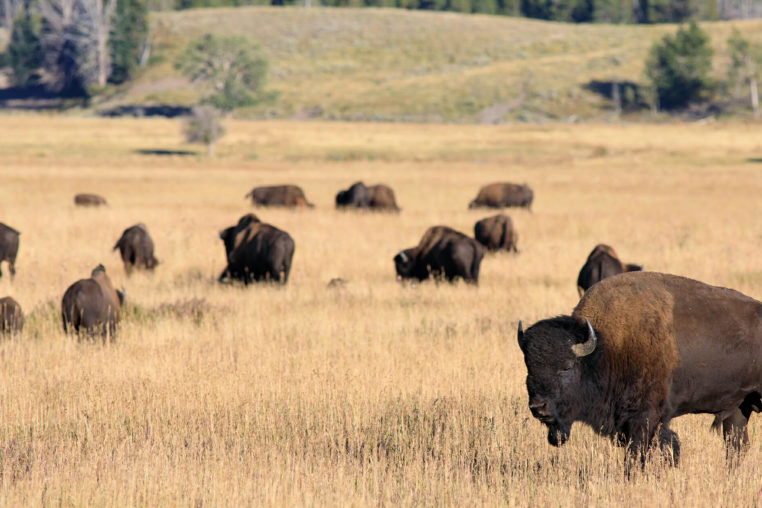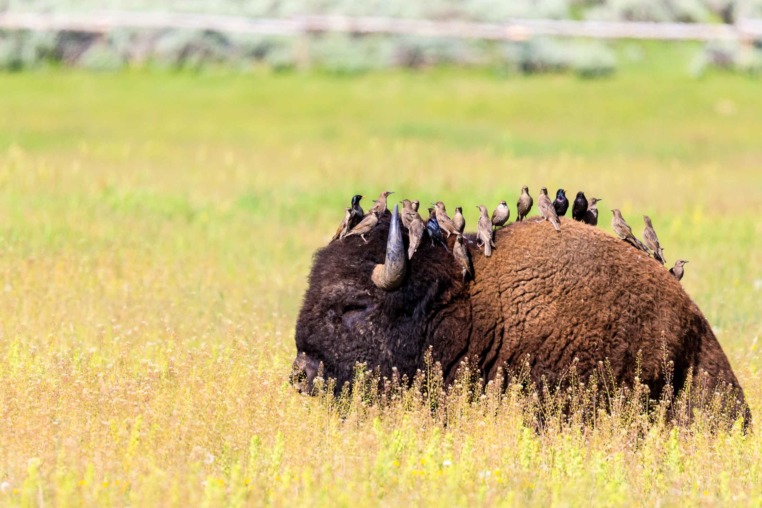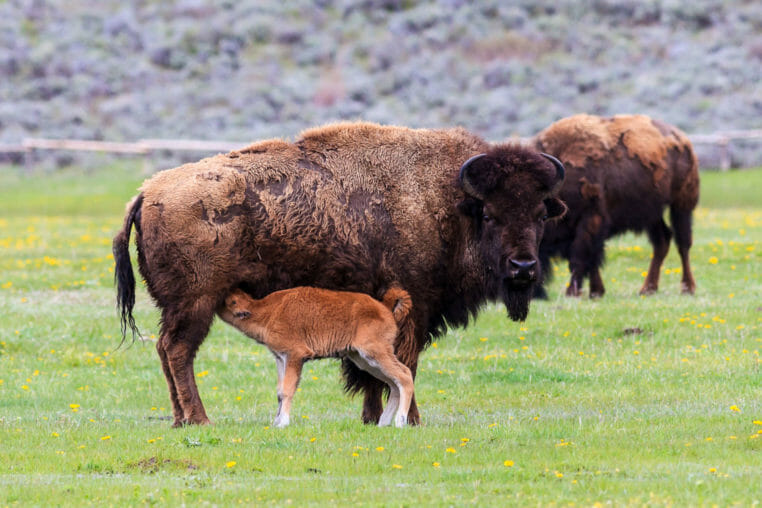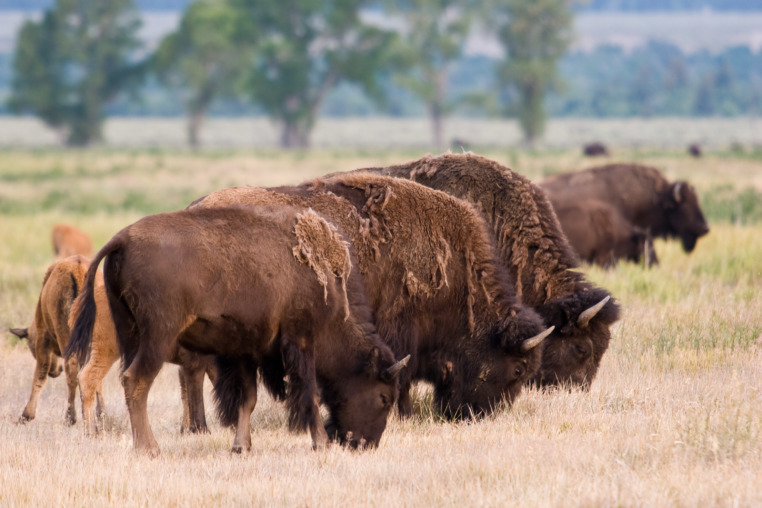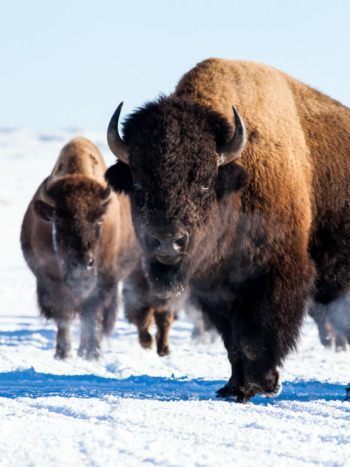
(Bison bison)
Bison, the United State’s national mammal, is a majestic and fascinating creature. With cows (females) weighing 1,000 pounds and bulls (males) reaching 2,000 pounds or more, bison are the largest land animal in North America. While they look passive and peaceful grazing in fields, they can run 35/mph and jump 6 feet, making them remarkably agile for their size. This is why it is extremely important to give them their space- they will charge!
Wildlife Viewing
- Yellowstone
- Grand Teton
Book Online
Watch For Wildlife On These Tours
About
Bison, the United State’s national mammal, is a majestic and fascinating creature. With cows (females) weighing 1,000 pounds and bulls (males) reaching 2,000 pounds or more, bison are the largest land animal in North America. While they look passive and peaceful grazing in fields, they can run 35/mph and jump 6 feet, making them remarkably agile for their size. This is why it is extremely important to give them their space- they will charge!
A Sad History
We are very lucky that the bison still roams the landscape today. Historic numbers for the bison population were in the tens of millions, over 30 million bison spread across the Western U.S. We almost completely lost them as they were driven to the brink of extinction by early settlers in the late 1800s from overhunting. This overhunting was driven by a couple of factors: it was a money grab for what their hides would earn a hunter and a tactic by the U.S. Government to obtain land occupied by Native Americans. Many native tribes relied on bison for a multitude of reasons, including food, tools, and clothing. Wiping out the bison cut off the tribes from their vital resources, forcing them to vacate the land. Thankfully, the unrestricted hunt ceased right before the bison were eliminated, leaving only 300 remaining in the US, and only 23 left in Yellowstone!
The Rut
Bison have a very long breeding season (or “rut”) which begins in July and can linger into October. The height of the rutting behaviors occur in August and is action packed! Males and females usually live in separate herds throughout the year, only coming together during the rut. Unlike elk, where there is one dominant bull to a harem of cows, the male and female herds mingle together and eventually pair off. A bull will investigate if a cow might be almost ready to breed. If she is, he will stick right by her side to keep other bulls away. If another bull gets too close, he will aggressively chase him off. If an approaching bull challenges one guarding a female and doesn’t back down, you may see a ferocious fight break out! Bison battles are very violent and sometimes even go to the death. The whole rut is punctuated by booming bellows from the bulls- long guttural roars that demonstrate their dominance and attract mates.
Gestation
Bison have the same gestation period as domestic cows- and as us! They are pregnant for 9 months before they give birth. Cows will either leave the herd to find a secluded spot, or give birth in the middle of the herd. When bison calves are born, they hardly resemble adults. They are a rusty orange color, which is why they are affectionately called “red dogs”.
When is the best time to see bison?
Luckily, bison are quite common. They are also very tolerant of summer heat and winter conditions, so while they may alter some of their behaviors slightly, they do not disappear during either season. They are also diurnal, which means they are active during the day. If you’re really aiming for large numbers of bison and some high energy, August is the time to look for bison during the rut!
FAQs
What happened to the bison population in the 1800s?
Bison once roamed North America in the tens of millions, but overhunting and government policies in the late 1800s brought them to the brink of extinction. By the end of that century, only a few hundred remained in the U.S., with just 23 left in Yellowstone. Thanks to conservation, the species has recovered, though still far below historic numbers.
How big do bison get in Yellowstone?
Bison are the largest land animals in North America. Cows (females) typically weigh around 1,000 pounds, while bulls (males) can reach 2,000 pounds or more. Despite their size, bison are surprisingly agile—they can run up to 35 miles per hour and jump six feet from a standstill.
What is the best time of year to see bison in Yellowstone?
Bison can be seen year-round in Yellowstone, as they tolerate both summer heat and harsh winter conditions. For the most exciting viewing, August is ideal—this is the height of the rut, when large herds gather and bulls display dramatic mating behaviors.
Are bison the same as buffalo?
Although the terms are often used interchangeably, true buffalo—such as water buffalo and Cape buffalo—are native to Africa and Asia. The animals in Yellowstone are bison (Bison bison), a species unique to North America. The word “buffalo” became popular during the 1800s and remains part of American culture, but scientifically, Yellowstone’s herds are bison.
How do bison survive Yellowstone’s harsh winters?
Bison are incredibly well-adapted to cold climates. Their thick coats provide insulation, and their large heads act like snow plows, allowing them to sweep snow aside to graze on grasses beneath. Even in deep winter, bison remain active and visible, often congregating near thermal areas where snow melts more quickly.
Further Reading
Yellowstone Wildlife Safari: Explore the Wild Heart of America’s First National Park
May 14, 2025
Yellowstone National Park is not just a marvel of geothermal wonders and sweeping vistas—it’s a living, breathing sanctuary where nature exists in its rawest form. A Yellowstone wildlife safari invites you into the untamed heart of the park, offering front-row seats to one of the greatest wildlife spectacles in North America.
Grand Teton Wildlife Tour
Apr 7, 2025
Driving into the park from downtown, you are instantly greeted with breathtaking mountains towering over the pristine valley and the winding Snake River. With riparian habitats, pine forests, and sagebrush flats, this diverse park is home to several highly sought after wildlife species such as bison, moose, bears, elk, and more!

